Bloomsbury Theatre
UCL's home for live performance and one of London's great stages, the 541-seat Bloomsbury Theatre was redeveloped entirely and re-opened in February 2019
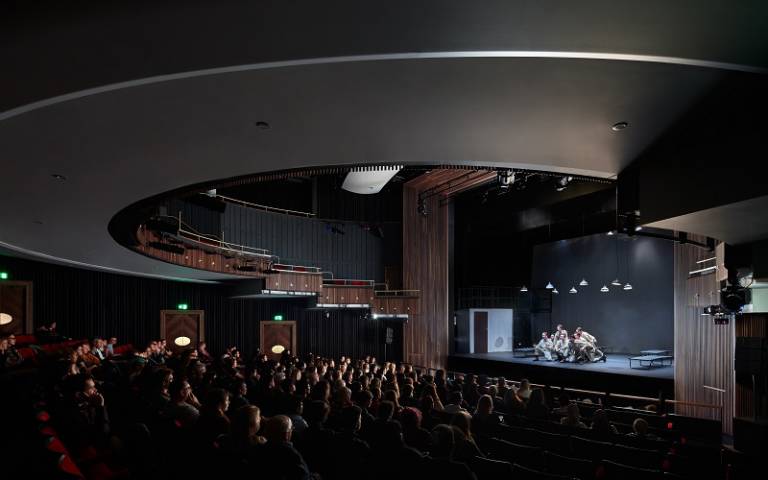
1 September 2021
Project Overview
Total upgrade: transforming a 20th century theatre into a theatre of the 21st century
The refurbishment of the Bloomsbury Theatre aimed to develop an under-utilised cultural asset for live student and staff performances, and create new sites for research at UCL. Originally opened as the Central Collegiate Building Auditorium in 1968 as a multi-functional home for student sports and university-produced theatre. It was renamed in 1982 as The Bloomsbury Theatre Building to reflect its geographical location, and reinforce it's identity as a site of live performances. The theatre was able to fulfil this purpose for close to 50 years before it was closed for required asbestos removal, and its final restoration.The Theatre's renovation has upgraded a high-quality performance space for hosting the best of theatre, dance, music and comedy, produced by students and staff.
This created scope for UCL students to benefit from a 21st century theatre for their productions and researchers to analyse live events making ground-breaking discoveries via performance-driven research.
Impact
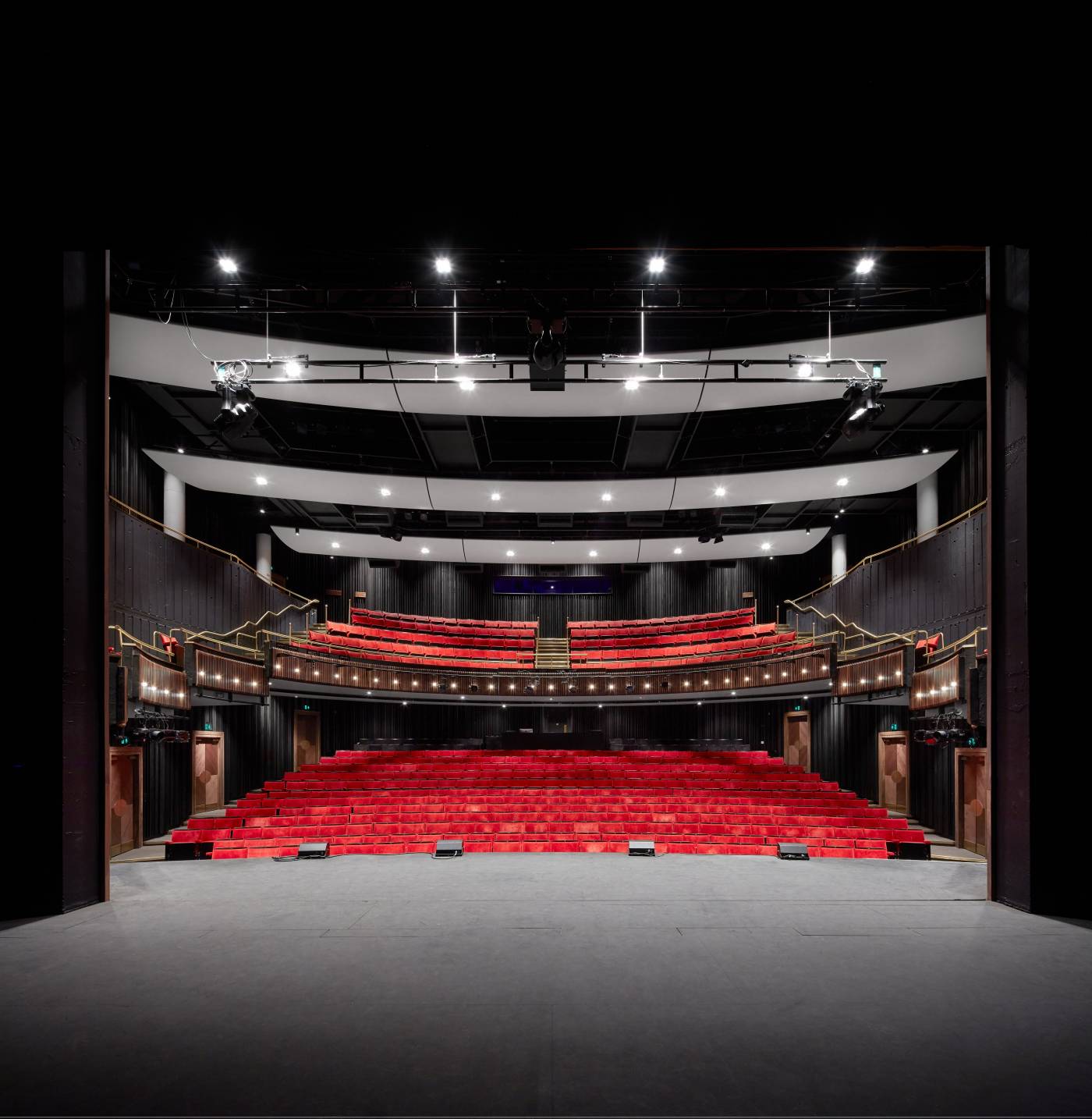
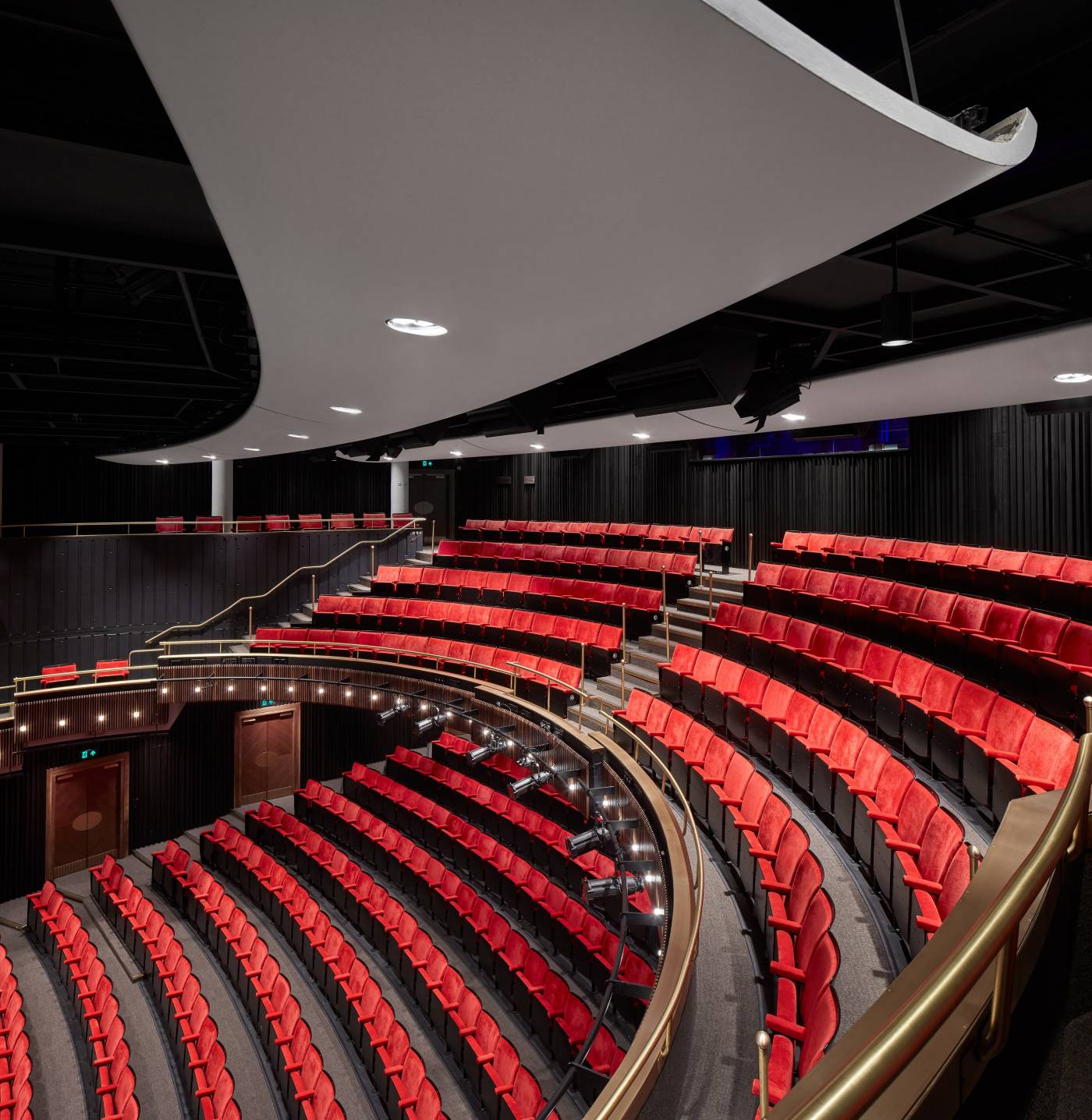
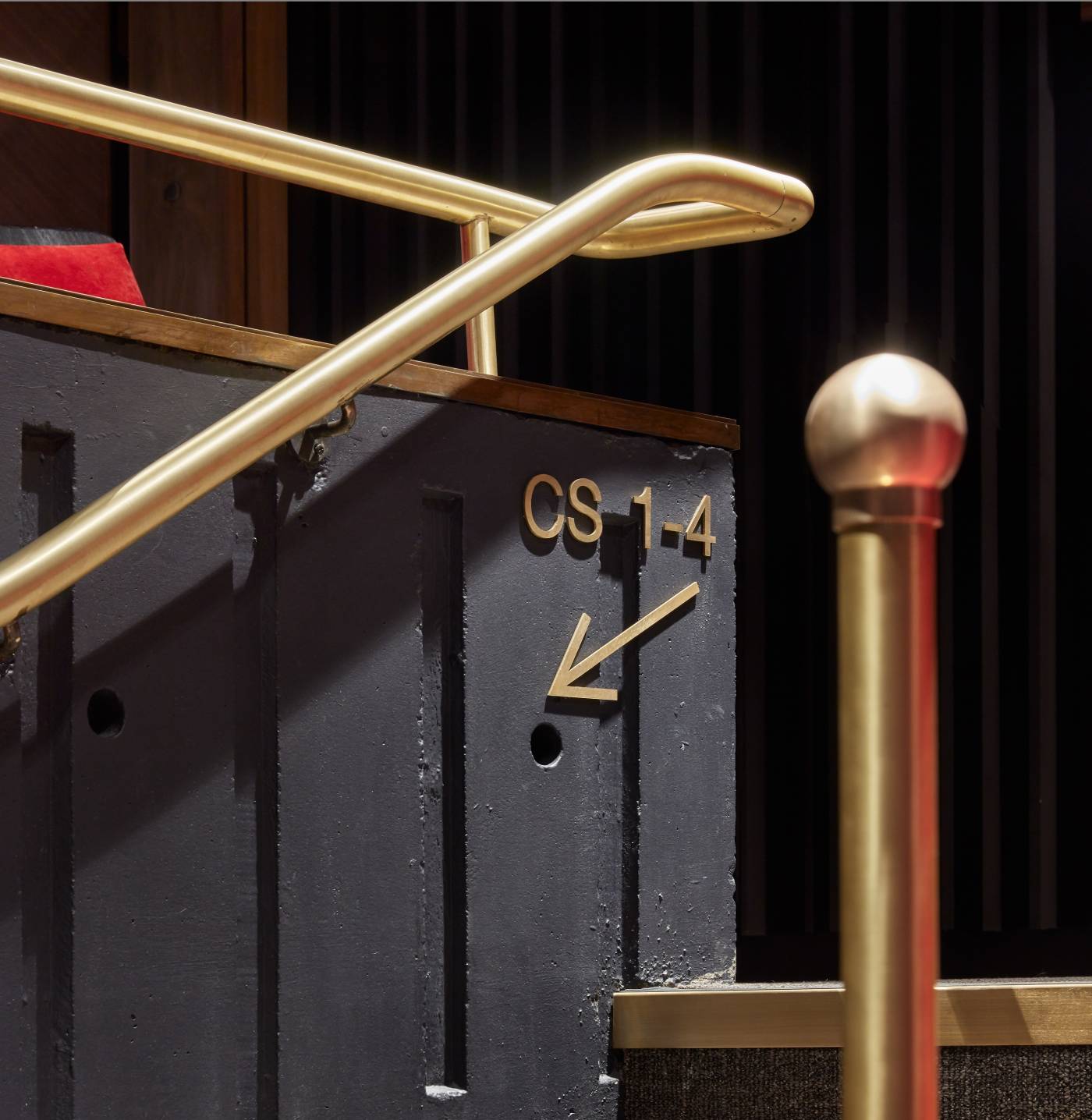
The redevelopment involved the creation of a new model for sharing stage time in Bloomsbury Theatre between student and staff societies such as the UCL Opera, and third party bookings. Previously the theatre had only been in use for part of the year. An expanded calendar of events throughout the year offered more time for student productions, more time for live research, more time for guest lectures and TED-talk style events compared to the way the theatre was utilised before the renovation. All this was achieved without reducing the time available to third-parties. The total result of this has been to increase the income of the theatre and make it more financially productive, through a combination of increased ticket sales and greater investment from within UCL. The reopening in 2019 gave the 4,000 students in student societies and the UCL Opera, an outstanding platform for collaborating with external cultural partners.
As well as the main auditorium of 541 seats, the project also involved the development of a new independent 100 seat studio theatre beneath the main stage, together with new foyer spaces, green rooms and toilets, providing the University with a flexible suite of spaces.
The refurbishment improved the theatre’s technical and audio-visual capabilities, including:
- New ‘follow spotlights’ now operating from the projector room; previously they were located among the seats in the circle.
- Improved stage lighting and audio-visual systems to enhance performances and give performers the ability to customise the theatre and studio.
- Improved safety of modernised backstage facilities including computer controlled auditorium lighting.
- New insulation to improve acoustics in the auditorium.
- A safer workshop space for training students and building sets.
- A new safety curtain installed and a replacement semi-sprung flooring designed to absorb shock and reduce bounce.
- Reinstatement of the historic paint-frame, a huge canvas on which artists create the scenery or backdrop of a performance.
- Replacement of the proscenium stage’s motorized thrusts, so the space for the stage and the orchestral pit can be customised for each production.
Sustainability
The theatre has been awarded SKA Gold, the highest possible sustainability rating for refurbishments assessed by Royal Institute of Chartered Surveyors (RICS). The evaluation noted the introduction of new lighting, as well as improved heating and ventilation systems which have enhanced comfort. Key features of sustainability include:
- A wide range of technologies to improve energy efficiency, including new long-life lighting; and a ventilation system with heat recovery reducing overall consumption.
- The theatre roof hosts solar panels which supply the neighbouring Student Centre, providing ‘free’ low carbon energy.
- Successfully applying circular economy by reusing the old teak slats from the theatre at the IoE bar.
Inclusion and Access
The refurbishment has also included improved accessibility in line with wider UCL policies and standards. Providing more wheelchair spaces and lift access for audiences as well as improved access for performers the theatre will be inclusive to more people than ever before. Access to a space is essential to ensuring people feel they are welcome, with this in mind the renovation included the following upgrades:
- Wheelchair spaces on upper as well as lower levels of the auditorium.
- Accessible Studio space and back of house facilities for use by staff, students and other performers.
- Accessible stage and performance spaces.
- Lift access improved where possible within the constraints of the existing concrete structure.
- Improved access for disabled visitors and a wheelchair accessible dressing room at stage level.
- Improved accessibility for wheelchair users including chairs with removable arms so people can easily transfer to and from their wheelchair.
Find out more about UCL’s Bloomsbury Theatre and Studio.
Architects and Contractors
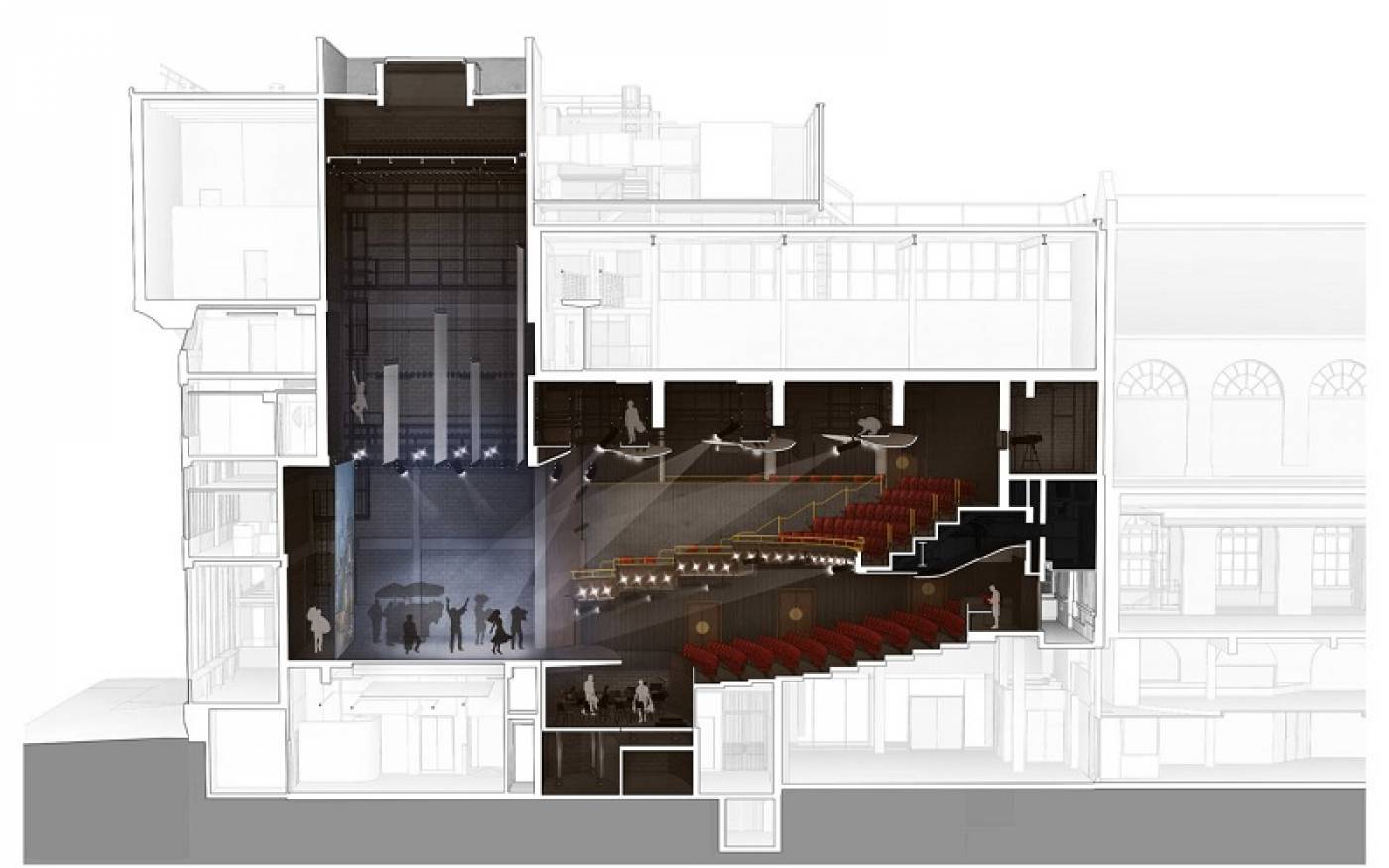


Nicholas Hare Architects collaborated with Overbury Contractors PLC to realise the vision of a reborn Bloomsbury Theatre managed by UCL Culture
 Close
Close

